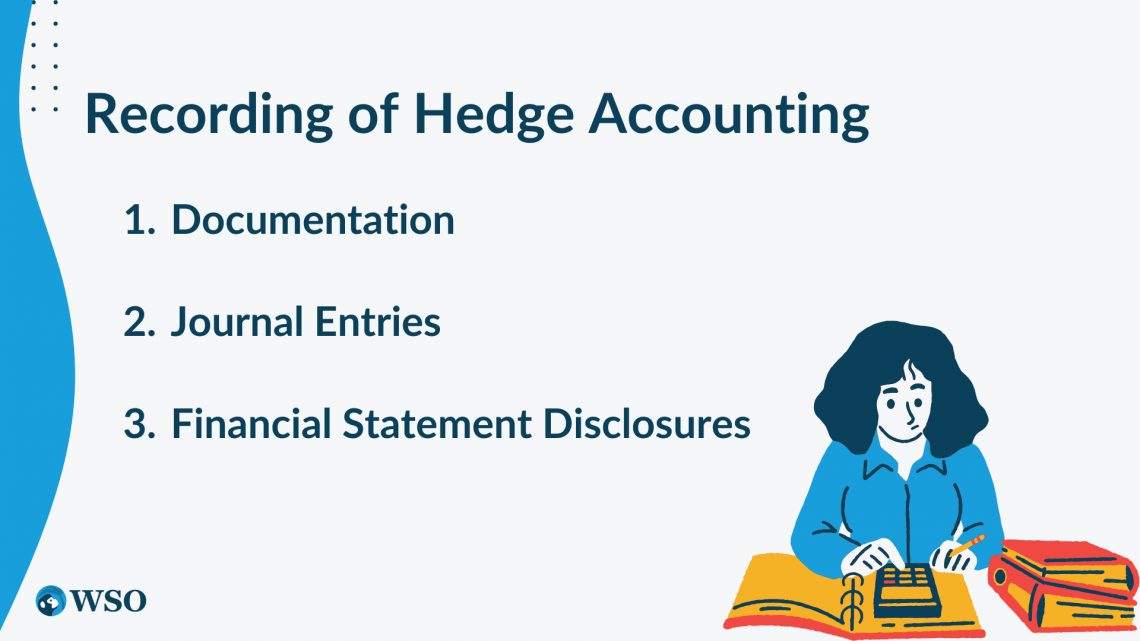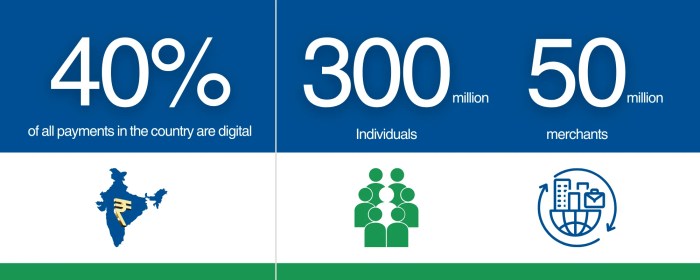The Role of Auditors in Preventing International Corporate Collapses is paramount in today’s interconnected global economy. The increasing complexity of multinational corporations, coupled with the potential for widespread financial fraud, necessitates a robust and vigilant auditing profession. This exploration delves into the crucial role auditors play in mitigating risk, ensuring transparency, and ultimately preventing catastrophic corporate failures. We will examine the methodologies employed, the challenges faced, and the crucial impact of international standards and cooperation in maintaining financial stability on a global scale.
From assessing financial risks and implementing effective internal controls to detecting fraud and ensuring accurate financial reporting, auditors act as gatekeepers, safeguarding investor confidence and promoting ethical business practices. Understanding their multifaceted role is critical to comprehending the mechanisms that support a healthy and sustainable global financial system. This analysis will highlight both the successes and shortcomings of current auditing practices, offering insights into how improvements can be made to further strengthen the prevention of international corporate collapses.
The Auditor’s Role in Risk Assessment
Auditors play a crucial role in mitigating the risk of international corporate collapses by proactively identifying and assessing potential financial vulnerabilities. Their expertise in financial reporting standards and internal control frameworks allows them to provide an independent opinion on the reliability of a company’s financial statements, offering valuable insights to stakeholders and helping prevent catastrophic failures. This assessment involves a multifaceted approach encompassing various methodologies and procedures.
Auditors utilize a range of methods to identify and assess financial risks in multinational corporations. These methods often begin with a thorough understanding of the company’s business model, industry landscape, and overall economic climate. This understanding informs the subsequent risk assessment process. Analytical procedures, such as ratio analysis and trend analysis, are employed to compare financial data across periods and against industry benchmarks, highlighting potential anomalies or deteriorations. Furthermore, auditors conduct substantive testing of financial transactions and account balances to verify their accuracy and completeness. The scope and intensity of these procedures are adjusted based on the level of assessed risk.
Methods for Identifying and Assessing Financial Risks
The identification and assessment of financial risks in multinational corporations require a systematic approach. Auditors typically begin by obtaining a detailed understanding of the entity’s business, including its operations, industry, and regulatory environment. This understanding helps them identify inherent risks, which are risks that exist regardless of the entity’s internal controls. Subsequently, they assess the effectiveness of internal controls designed to mitigate these inherent risks. This assessment involves reviewing documentation, conducting inquiries, and performing tests of controls. Finally, they consider the entity’s risk response, such as its risk management strategies and governance framework, to determine the overall level of financial risk. A significant portion of this assessment focuses on identifying potential fraud risks, given their destructive potential. For instance, a significant increase in write-offs of receivables might indicate potential fraud or a deterioration in credit management.
Evaluating Internal Controls Related to Financial Reporting
Evaluating internal controls in an international context presents unique challenges due to varying regulatory environments and operational complexities. Auditors must navigate diverse accounting standards, legal frameworks, and business practices across multiple jurisdictions. Procedures often involve gaining an understanding of the control environment, including the entity’s tone at the top, commitment to ethics, and organizational structure. They then evaluate the design and operating effectiveness of key controls over financial reporting, including controls related to authorization, recording, and safeguarding of assets. This evaluation often includes walkthroughs of transactions, observation of control procedures, and inquiries of personnel. Documentation is crucial, with auditors relying on internal control documentation provided by the company and evidence gathered during their testing. For instance, auditors might assess the effectiveness of controls over revenue recognition, a critical area prone to manipulation in many industries. They would examine the processes involved in order fulfillment, invoicing, and cash collection, looking for weaknesses that could lead to misstatement.
Comparison of Risk Assessment Methodologies
Different auditing firms may employ variations in their risk assessment methodologies, although they generally adhere to common auditing standards. These variations may stem from differing firm cultures, technological capabilities, or specialized industry expertise. For example, one firm might heavily rely on data analytics to identify anomalies in financial data, while another might prioritize a more traditional approach involving extensive manual testing. However, all reputable firms will follow a systematic approach, incorporating elements such as inherent risk assessment, control risk assessment, and detection risk assessment. The differences often lie in the specific techniques and tools used within each of these phases. The ultimate goal, however, remains consistent: to identify and assess risks accurately and effectively.
Red Flags Indicating Risk of Corporate Collapse
Several red flags should prompt heightened auditor scrutiny and indicate a heightened risk of corporate collapse. These include: significant and unexplained declines in revenue or profitability, substantial increases in debt levels, a significant deterioration in liquidity, evidenced by a decline in current ratio and cash flow issues, repeated accounting irregularities or restatements, weak or ineffective internal controls, aggressive accounting practices, frequent changes in senior management, and significant related-party transactions lacking transparency. The presence of several of these red flags simultaneously significantly increases the likelihood of a company’s impending financial distress. For example, Enron’s collapse was preceded by a combination of aggressive accounting practices, opaque special purpose entities, and weak internal controls.
Auditing Standards and International Frameworks

The consistent application of high-quality auditing standards is crucial for maintaining trust in financial markets and preventing corporate collapses, particularly within the complex landscape of multinational corporations. International frameworks provide a baseline for these standards, though challenges remain in their uniform implementation across diverse jurisdictions.
International auditing standards aim to ensure a degree of consistency in the audit process globally, promoting comparability and reliability of financial statements. However, the practical application of these standards often encounters significant obstacles, influenced by factors ranging from differing legal systems to varying levels of enforcement.
Key International Auditing Standards and Their Application to Multinational Corporations
International Standards on Auditing (ISAs), issued by the International Auditing and Assurance Standards Board (IAASB), form the cornerstone of global auditing practice. These standards provide a framework for auditors to plan and perform audits, ensuring that financial statements present a true and fair view. For multinational corporations, ISAs dictate consistent auditing procedures across various subsidiaries and operations, regardless of their geographical location. Compliance with ISAs is often a requirement for listing on major international stock exchanges and gaining access to international capital markets. Specific ISAs address areas such as risk assessment, audit evidence, and reporting, providing a structured approach to the audit process for complex multinational entities. The application of these standards requires auditors to understand the specific business risks associated with each subsidiary and to tailor their audit approach accordingly.
Challenges in Applying Consistent Auditing Standards Across Jurisdictions
Applying consistent auditing standards across different jurisdictions presents several significant challenges. Variations in legal frameworks, accounting regulations, and enforcement mechanisms can lead to inconsistencies in audit quality. Cultural differences and varying levels of professional skepticism among auditors in different countries can also influence the application of these standards. Furthermore, the resources available to regulatory bodies may differ significantly across jurisdictions, affecting their ability to effectively oversee the auditing profession. Differences in the level of corporate governance and transparency can also create challenges in achieving consistency. For instance, a country with weak corporate governance might make it difficult to obtain sufficient audit evidence, hindering the auditor’s ability to provide a reliable audit opinion.
The Role of Regulatory Bodies in Overseeing the Auditing Profession Internationally
International regulatory bodies play a vital role in overseeing the auditing profession and promoting consistent application of auditing standards. The IAASB, for example, sets the international auditing standards, while organizations like the Public Company Accounting Oversight Board (PCAOB) in the United States oversee audits of publicly traded companies. Other national regulatory bodies play a critical role in enforcing these standards within their respective jurisdictions. These bodies often collaborate internationally to share best practices and address emerging challenges in the auditing profession. Effective oversight requires coordination and cooperation between these bodies to ensure consistent enforcement of auditing standards across borders. This includes mechanisms for information sharing, cross-border investigations, and the development of common enforcement approaches.
Potential Conflicts of Interest for Auditors Working with Multinational Corporations
Auditors working with multinational corporations can face numerous potential conflicts of interest. The long-term relationship between an audit firm and a multinational client can create a pressure to compromise independence. The potential for lucrative non-audit services, such as consulting, can create a financial incentive for auditors to compromise their objectivity. Furthermore, the complexity of multinational corporations and the involvement of multiple jurisdictions can make it difficult to identify and manage potential conflicts of interest effectively. Auditors need to carefully assess and manage these risks to maintain their independence and the integrity of their audit opinions. Strong corporate governance structures and robust regulatory oversight are essential to mitigate these risks.
Comparison of Major International Auditing Standards
| Standard | Description | Relevance to Preventing Corporate Collapse | Example Application |
|---|---|---|---|
| ISA 200 (Overall Objectives of the Independent Auditor and the Conduct of an Audit in Accordance with International Standards on Auditing) | Sets the overall objectives of the audit and establishes the fundamental principles guiding the auditor’s work. | Provides a framework for a thorough and objective audit, reducing the risk of overlooking critical issues that could lead to collapse. | Ensures that the auditor maintains professional skepticism and obtains sufficient appropriate audit evidence. |
| ISA 315 (Identifying and Assessing the Risks of Material Misstatement Through Understanding the Entity and Its Environment) | Focuses on the auditor’s understanding of the entity and its environment, including internal controls. | Allows auditors to identify and assess risks early, enabling them to allocate resources effectively and prevent material misstatements that could lead to financial distress. | Guides the auditor in assessing the risk of fraud and other significant risks, such as financial reporting risks related to revenue recognition. |
| ISA 500 (Audit Evidence) | Deals with the nature, sufficiency, and appropriateness of audit evidence. | Ensures the auditor obtains sufficient and appropriate audit evidence to support their opinion, reducing the risk of issuing an unqualified opinion on materially misstated financial statements. | Requires auditors to perform procedures such as inspection, observation, confirmation, recalculation, and analytical procedures. |
| ISA 700 (Forming an Opinion and Reporting on Financial Statements) | Specifies the auditor’s responsibilities in forming an opinion and reporting on the financial statements. | Ensures that the auditor’s opinion is clear, concise, and provides relevant information to users of the financial statements. | Dictates the format and content of the auditor’s report, including the opinion and any modifications. |
Fraud Detection and Prevention
Auditors play a crucial role in preventing and detecting financial statement fraud, which can lead to significant corporate collapses. Their expertise in accounting principles, internal controls, and auditing standards allows them to identify red flags and irregularities that might otherwise go unnoticed. Effective fraud detection relies on a combination of robust audit procedures, a strong understanding of common fraud schemes, and the unwavering independence of the auditor.
Common Financial Statement Fraud Schemes
Several common financial statement fraud schemes can significantly impact a company’s financial health, potentially leading to collapse. These schemes often involve manipulating revenue recognition, inflating assets, or understating liabilities. For example, revenue recognition fraud might involve recording revenue before it is legitimately earned, such as recognizing sales that have not yet been shipped or for which payment is not yet assured. Another common scheme involves overstating the value of assets, perhaps through inflated valuations of inventory or property, plant, and equipment. Conversely, liabilities may be understated by delaying the recognition of expenses or obligations, creating a false impression of financial strength. The Enron scandal, for instance, involved complex accounting practices to hide massive debt and inflate profits, ultimately resulting in the company’s bankruptcy.
Auditor Procedures for Fraud Detection
Auditors employ a variety of procedures to detect fraudulent activities. These procedures are designed to identify anomalies and inconsistencies within the financial statements and supporting documentation. Analytical procedures, comparing financial data with industry benchmarks and prior periods, can highlight unusual trends or fluctuations that warrant further investigation. For example, a sudden and significant increase in sales revenue without a corresponding increase in accounts receivable could indicate revenue recognition fraud. Substantive testing, which involves verifying specific transactions and balances, provides direct evidence of the accuracy and completeness of the financial statements. This includes examining supporting documentation for transactions, confirming balances with third parties, and performing inventory counts. Inquiry, a key component of the audit process, involves discussions with management and other personnel to gain an understanding of the company’s internal controls and business operations, and to uncover any potential red flags.
The Importance of Auditor Independence
Auditor independence is paramount in preventing and detecting fraud. An independent auditor, free from any undue influence from management or other stakeholders, is better positioned to objectively assess the financial statements and identify potential fraudulent activities. Conflicts of interest, whether real or perceived, can compromise the auditor’s ability to perform their duties impartially and effectively. Regulations like the Sarbanes-Oxley Act in the United States emphasize the importance of auditor independence, requiring auditors to maintain a level of objectivity and to disclose any potential conflicts of interest. The lack of independence can severely erode public trust in the audit process and the reliability of financial statements.
Data Analytics in Fraud Detection for Multinational Corporations
Data analytics plays an increasingly important role in fraud detection, particularly for multinational corporations with vast amounts of complex financial data. Advanced analytical techniques can identify patterns and anomalies that might be missed through traditional auditing methods. For instance, data analytics can be used to analyze large datasets to identify unusual transactions, such as payments to shell companies or unusual patterns in expense reports. These techniques can also be used to assess the effectiveness of internal controls and to identify areas of higher fraud risk. The ability to process and analyze large volumes of data quickly and efficiently is critical for effectively auditing multinational corporations with complex global operations.
Preventative Measures to Reduce Fraud Risk
Auditors can implement several preventative measures to reduce the risk of fraud. These measures are aimed at strengthening internal controls, enhancing the monitoring of activities, and improving the overall tone at the top.
- Implementing robust internal controls: Strong internal controls, including segregation of duties, authorization procedures, and regular reconciliations, can significantly reduce the opportunity for fraud.
- Regularly reviewing and updating internal controls: Internal controls should be reviewed and updated regularly to address changing business risks and operational processes.
- Promoting a strong ethical culture: A culture of integrity and ethical behavior can deter fraudulent activities and encourage employees to report potential wrongdoing.
- Conducting regular risk assessments: Identifying and assessing fraud risks is a critical step in developing effective prevention and detection strategies.
- Utilizing data analytics for continuous monitoring: Continuous monitoring using data analytics can identify potential fraud indicators in real-time.
- Enhancing whistleblower protection: Providing a safe and confidential channel for employees to report potential fraud is crucial.
Governance and Internal Controls
Strong corporate governance and robust internal controls are crucial in preventing corporate collapses. These mechanisms act as safeguards, mitigating risks and promoting financial stability. A breakdown in either area significantly increases the likelihood of financial distress and ultimately, failure. Auditors play a vital role in evaluating the effectiveness of these systems, providing independent assurance to stakeholders.
Effective internal controls contribute significantly to a company’s financial stability. They provide reasonable assurance regarding the reliability of financial reporting, the effectiveness and efficiency of operations, and compliance with laws and regulations. A well-designed system of internal controls reduces the risk of errors, fraud, and mismanagement, leading to more accurate and reliable financial information. This, in turn, fosters investor confidence and facilitates access to capital.
Corporate Governance’s Role in Preventing Corporate Collapses
Robust corporate governance structures establish a clear framework for accountability and responsibility within an organization. This framework includes a clearly defined board of directors with independent members, a transparent decision-making process, and effective risk management procedures. A strong governance structure ensures that management acts in the best interests of shareholders and other stakeholders, reducing the likelihood of reckless decisions that could lead to financial ruin. For example, the Sarbanes-Oxley Act of 2002 (SOX) in the US, implemented in response to major corporate accounting scandals, significantly strengthened corporate governance requirements, including enhanced board oversight and internal controls.
The Contribution of Effective Internal Controls to Financial Stability
Effective internal controls encompass various processes and procedures designed to mitigate risks across all aspects of a business. These controls include segregation of duties, authorization procedures, regular reconciliations, and robust IT security measures. For instance, a strong system of internal controls would ensure that no single individual has complete control over assets or transactions, minimizing the opportunity for fraud. Regular reconciliation of bank statements with internal records helps detect discrepancies early, preventing larger problems down the line. Effective internal controls ultimately lead to more accurate financial reporting, improved operational efficiency, and reduced risk exposure, contributing to enhanced financial stability.
Weaknesses in Corporate Governance Structures Increasing Collapse Risk
Weaknesses in corporate governance can significantly increase the risk of corporate collapse. These weaknesses include a lack of board independence, inadequate risk oversight, insufficient internal controls, and a culture of non-compliance. For example, a board dominated by executives with close ties to management may be less likely to challenge questionable decisions, potentially leading to risky ventures or financial mismanagement. Similarly, a weak internal audit function may fail to identify and address significant risks before they escalate into major problems. The Enron scandal serves as a stark example of how a combination of weak governance, accounting irregularities, and a culture of aggressive risk-taking ultimately led to the company’s demise.
Auditors’ Assessment of Internal Control Effectiveness
Auditors assess the effectiveness of a company’s internal control system using a risk-based approach. This involves identifying key controls, testing their design and operating effectiveness, and documenting their findings. Auditors typically use frameworks such as the COSO framework (Committee of Sponsoring Organizations of the Treadway Commission) to guide their assessment. The audit process includes evaluating the control environment, risk assessment processes, control activities, information and communication systems, and monitoring activities. Based on their assessment, auditors provide an opinion on the effectiveness of the internal control system, which is crucial for investors and other stakeholders.
An Effective Corporate Governance Structure for a Multinational Corporation
An effective corporate governance structure for a multinational corporation requires a globally consistent approach while adapting to local regulations and business environments. Key control points include: a diverse and independent board of directors with clear roles and responsibilities; a robust ethics and compliance program; a centralized risk management function; decentralized operational controls tailored to specific business units; a strong internal audit function providing independent assurance; and transparent and timely financial reporting. Regular board meetings, performance evaluations, and clear lines of communication are essential for maintaining accountability and effective oversight. The structure should also incorporate mechanisms for whistle-blowing and independent investigations into alleged wrongdoing. Furthermore, regular reviews of the effectiveness of the governance structure and internal controls are vital for ensuring their ongoing relevance and effectiveness in a constantly evolving business environment.
Reporting and Transparency
Accurate and timely financial reporting is the bedrock of a healthy capital market. It fosters trust between companies and investors, enabling efficient allocation of resources and sustainable economic growth. Without reliable financial information, investors are unable to make informed decisions, leading to market instability and potentially devastating consequences for businesses and the wider economy.
The role of auditors in ensuring the transparency of financial information is paramount. They act as independent gatekeepers, verifying the accuracy and fairness of a company’s financial statements. This independent verification provides assurance to investors and other stakeholders that the reported financial position is a true and fair reflection of the company’s actual performance. Their involvement strengthens the integrity of the financial reporting process, mitigating the risk of misrepresentation and promoting investor confidence.
Consequences of Inaccurate or Misleading Financial Reporting
Inaccurate or misleading financial reporting can have severe repercussions. It can erode investor confidence, leading to a decline in share prices and difficulty in raising capital. Companies found guilty of such practices face substantial fines, legal action, and reputational damage, potentially leading to bankruptcy. Furthermore, it can damage the overall credibility of the financial markets, leading to a loss of public trust. The Enron and WorldCom scandals serve as stark reminders of the devastating consequences of fraudulent financial reporting, highlighting the importance of robust auditing practices.
Auditor Methods for Verifying Financial Statement Accuracy
Auditors employ a variety of methods to verify the accuracy of financial statements. These include examining supporting documentation, conducting interviews with company personnel, performing analytical procedures to identify unusual patterns or inconsistencies, and testing internal controls to assess the reliability of the financial reporting process. They also utilize statistical sampling techniques to assess the accuracy of large populations of transactions and balances. The specific procedures employed depend on the size and complexity of the company, as well as the inherent risks associated with its operations.
Hypothetical Scenario: Ensuring Accuracy and Transparency, The Role of Auditors in Preventing International Corporate Collapses
Imagine a technology company, “InnovateTech,” preparing its annual financial statements. InnovateTech has experienced rapid growth, resulting in complex transactions and a significant increase in its revenue streams. The company’s management prepares the initial financial statements, reflecting strong performance. An independent audit firm is engaged to conduct the audit. The auditors meticulously review InnovateTech’s accounting records, testing the accuracy of revenue recognition, verifying the existence of assets, and assessing the adequacy of its allowance for doubtful accounts. They also perform substantive analytical procedures, comparing InnovateTech’s financial performance to industry benchmarks and identifying any unusual fluctuations. Through this rigorous process, the auditors identify a minor error in the calculation of depreciation expense. While not material, the correction demonstrates the auditor’s commitment to accuracy. The final audited financial statements, incorporating the correction, provide a true and fair view of InnovateTech’s financial position, reinforcing investor confidence and maintaining transparency. This scenario highlights the crucial role auditors play in ensuring the reliability of financial information.
The Impact of Globalization on Auditing: The Role Of Auditors In Preventing International Corporate Collapses
Globalization has profoundly reshaped the auditing profession, presenting both unprecedented opportunities and significant challenges. The interconnectedness of global markets and the rise of multinational corporations (MNCs) have increased the complexity of auditing engagements, demanding a more sophisticated and internationally coordinated approach. This necessitates a deeper understanding of diverse regulatory frameworks, accounting practices, and cultural nuances.
The increased complexity of auditing multinational corporations stems from several factors. MNCs operate across multiple jurisdictions, each with its own unique legal and regulatory environment, accounting standards, and tax laws. Auditors must navigate these diverse landscapes, ensuring consistency and comparability in financial reporting across subsidiaries and entities. Furthermore, the intricate web of inter-company transactions, foreign currency exchange fluctuations, and diverse business models adds another layer of complexity to the audit process. The sheer scale and scope of MNC operations demand significant resources and specialized expertise from auditing firms.
Challenges Posed by Globalization to the Auditing Profession
Globalization presents several significant challenges to the auditing profession. The need for specialized skills in international accounting standards, tax regulations, and cross-cultural communication is paramount. Auditors must be equipped to understand and interpret the diverse legal and regulatory environments in which MNCs operate. Maintaining audit quality across geographically dispersed teams and managing the inherent risks associated with cross-border operations also pose significant challenges. The coordination of audits across multiple jurisdictions, ensuring consistency and adherence to international standards, necessitates robust communication and collaboration protocols. Furthermore, the increasing prevalence of complex financial instruments and transactions requires specialized knowledge and expertise to accurately assess and report on the financial health of MNCs. Finally, the potential for regulatory arbitrage and the difficulty in enforcing consistent standards across jurisdictions present ongoing challenges to maintaining the integrity of the global auditing system.
Enhanced International Cooperation in Auditing
The need for enhanced international cooperation in auditing is undeniable. Harmonizing accounting standards, promoting the convergence of auditing practices, and fostering greater collaboration among regulatory bodies are crucial for maintaining the integrity and credibility of financial reporting across borders. International cooperation can facilitate the sharing of best practices, enhance the effectiveness of cross-border audits, and improve the consistency of audit quality globally. The establishment of international auditing standards and the development of mechanisms for enforcing those standards are vital steps in achieving this goal. Increased collaboration between national regulatory bodies and international organizations like the International Federation of Accountants (IFAC) is also essential for promoting global consistency and improving the overall quality of auditing services. This includes the sharing of information on audit methodologies, fraud detection techniques, and regulatory developments.
Comparative Analysis of Approaches to Auditing Regulation Across Countries
Different countries adopt varying approaches to regulating the auditing profession. Some countries have highly centralized regulatory systems, while others rely on a more decentralized model. The level of independence afforded to audit firms, the scope of regulatory oversight, and the enforcement mechanisms employed can vary significantly across jurisdictions. For example, the United States has a relatively stringent regulatory framework for public accounting firms, with the Public Company Accounting Oversight Board (PCAOB) playing a significant role in oversight. In contrast, other countries may have less centralized regulatory structures, with professional bodies playing a more prominent role in setting standards and enforcing ethical conduct. These differences can create challenges for multinational corporations and their auditors, as they must navigate diverse regulatory landscapes and ensure compliance with a variety of standards. This highlights the need for greater harmonization of auditing regulations across countries to create a more level playing field and improve the consistency of audit quality globally.
Hypothetical Training Program for Auditors Working with Multinational Corporations
A comprehensive training program for auditors working with multinational corporations should incorporate several key components. The curriculum should cover international accounting standards (IFRS), various national Generally Accepted Accounting Principles (GAAP), and tax regulations relevant to the jurisdictions where the MNC operates. Modules on cross-cultural communication, conflict resolution, and ethical considerations in international business settings would be crucial. The program should also include practical case studies and simulations that replicate the challenges faced by auditors in multinational contexts. Furthermore, the program could incorporate training on advanced auditing techniques for complex financial instruments and transactions common in global markets. Specialized training on anti-money laundering regulations and international sanctions compliance would also be valuable. Finally, the program should emphasize the importance of teamwork and collaboration in a multinational setting, fostering the development of effective communication and coordination skills among auditors from diverse backgrounds. The program could be delivered through a blended learning approach, combining online modules, in-person workshops, and on-the-job mentoring.
Ending Remarks
In conclusion, the role of auditors in preventing international corporate collapses is multifaceted and critical. While challenges remain, particularly in navigating the complexities of globalization and diverse regulatory landscapes, the importance of rigorous auditing standards, independent practices, and proactive fraud detection cannot be overstated. By enhancing international cooperation, leveraging data analytics, and continuously adapting to evolving business models, auditors can significantly contribute to a more stable and transparent global financial system, safeguarding against future corporate failures and bolstering investor confidence worldwide. The ongoing evolution of auditing practices reflects a commitment to learning from past mistakes and strengthening the safeguards against future crises.
Popular Questions
What are the potential consequences of auditor negligence?
Auditor negligence can lead to significant financial losses for investors, damage to corporate reputation, legal liabilities for the auditing firm, and even criminal charges in severe cases.
How do auditors deal with conflicts of interest?
Auditors must adhere to strict ethical codes and disclose any potential conflicts of interest. Independent oversight bodies also play a role in ensuring objectivity and preventing undue influence.
What is the role of technology in modern auditing?
Technology, particularly data analytics, plays an increasingly important role in enabling auditors to process large datasets, identify anomalies, and enhance the efficiency and effectiveness of audit procedures.
How are auditing standards enforced internationally?
International auditing standards are enforced through a combination of regulatory bodies, professional accounting organizations, and legal frameworks in individual jurisdictions. However, inconsistencies and challenges in enforcement remain.
Do not overlook the opportunity to discover more about the subject of How to Optimize Business Cash Flow for Growth.









